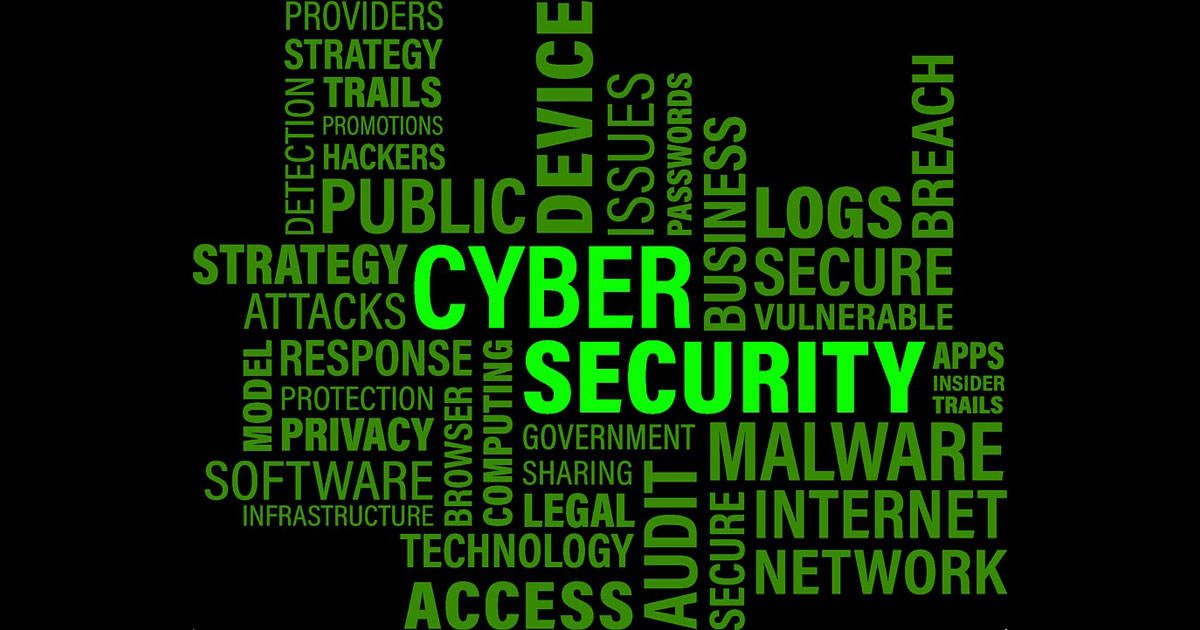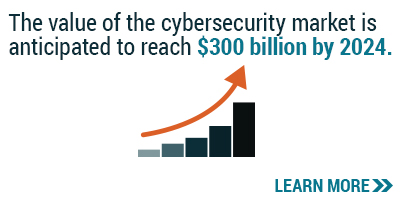$6 Trillion is Expected to Be Spent Globally on Cybersecurity by 2021
Cybercrime comes with a hefty price tag. It will do about $6 trillion worth of damage by next year, according to Cybercrime Magazine. The source stated, “Cyberattacks are the fastest growing crime in the U.S., and they are increasing in size, sophistication and cost.”1 What’s more, most companies have poor cybersecurity practices, per Varonis.2 “Only 5% of companies’ folders are properly protected, on average,” wrote a contributor.

Each year, cybersecurity trends change. In 2019, a few trends in data security included digital asset theft, a major increase in phishing, failing antivirus software, and increased polymorphic and metamorphic threats, according to Blokt.3 Cybersecurity Statistics, Facts, and Trends in 2020 4 reported that we’d likely see the following cybersecurity trends this year:
- Security services outpacing software
- Hackers targeting shadow IT resources
- Known vulnerabilities being increasingly targeted
- The development of data security governance programs
- A rise in security assessments
A couple of other predicted trends include CISOs and compliance issues gaining more visibility, and increased focus on cloud security platforms.5
There’s a reason why the financial burden of cybercrime is getting heavier with each passing month: the average data breach costs almost $4 million.6 “A single lost or stolen individual’s record costs businesses $225,” CyberShark explained.7 “Over 74 percent of cyberattacked companies who experienced stolen data averaged 1,000 files lost during their breaches.” Over time, losing individuals’ records can be financially devastating to companies, and that is just one way poor cybersecurity affects organizations.
To protect themselves from cyber attacks, organizations are expanding their budgets to include more cybersecurity initiatives. Companies can decrease the cost of cybercrime by allocating more money to hiring cybersecurity business analysts. According to Joe Barrios,8 BAs support a company’s cybersecurity goals by:
- Encouraging compliance with cybersecurity policies
- Managing risks
- Implementing security tools
- Budgeting for cybersecurity initiatives
- Helping companies recover from cybercrimes
Cybersecurity business analysts also help organizations keep data more secure by working with product stakeholders to define business needs. They then translate those business needs into requirements. This helps engineers and developers create better cybersecurity solutions for companies. Additionally, business analysts sometimes offer presentations to user groups and design use cases and business cases. All of this helps enterprises prevent cybercrime and avoid the associated costs, which can be overwhelming.
In addition to focusing on technical solutions, Forbes suggested that companies also focus on behaviors to effectively stave off cybercrime. “Today’s sophisticated threat landscape is a rich, multifaceted organizational challenge that requires insight on how data is used across myriad business functions,” wrote a contributor.9 “Shifting the focus to understanding the behavior patterns of people and their interactions with technology provides clarity in regard to who is using sensitive data, why and from where.” This is another area in which a cybersecurity business analyst may be of help to companies.
While cybercrime is on the rise, many business analysts are making it a priority to become more skilled in cybersecurity practices. Are you a BA wanting to gain skills in this area? If so, register for the link to watch the recording of Cybersecurity: Business Analysis Essentials webinar. Learn more about how you can help your organization protect against cybercrime risks.
Learn more about IIBA® and IEEE Computer Society's joint learning and certification program on Cybersecurity Analysis today.
References
1. Cybercrime Magazine. Cybercrime damages $6 trillion by 2021. https://cybersecurityventures.com/hackerpocalypse-cybercrime-report-2016/.
2. Varonis. 110 must-know cybersecurity statistics for 2020. https://www.varonis.com/blog/cybersecurity-statistics/.
3. Blokt. Top 15 cybersecurity trends for 2019. https://blokt.com/guides/top-15-cybersecurity-trends-for-2019.
4, 5. Entrepreneurship in a Box. Cybersecurity statistics, facts, and trends in 2020. https://www.entrepreneurshipinabox.com/19222/cybersecurity-statistics-facts-and-trends-in-2020/.
6. Security Intelligence. 11 trends to inform your 2020 cybersecurity budget. https://securityintelligence.com/articles/11-stats-on-ciso-spending-to-inform-your-2020-cybersecurity-budget/.
7. CyberShark. How much should your company invest in cybersecurity? https://www.blackstratus.com/how-much-should-your-company-invest-in-cybersecurity/.
8. Barrios, Joe. Five key roles for the business analyst in cybersecurity. https://www.joebarrios.com/roles-business-analyst-in-cybersecurity/.
9. Forbes. How not to waste a trillion dollars on cybersecurity. https://www.forbes.com/sites/forbestechcouncil/2018/11/09/how-not-to-waste-a-trillion-dollars-on-cybersecurity/#14466c1adf9a.
